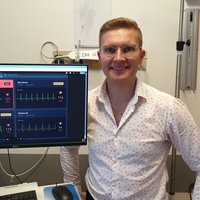Biotechnology & medicine
Patrick Hsu
Making CRISPR more flexible to treat brain disease

China
Shiyou Zhu
Optimizing a high-throughput functional screening method for the genome to achieve safe and efficient RNA single-base editing

Europe
Marek Sirendi
His device aims to predict and prevent cardiac arrests among patients with heart problems

Latin America
Cristian Estrada
Decreasing water consumption for agricultural purposes while optimizing roots and soils

MENA
Mohamed Dhaouafi
Affordable 3D printed, bionic, and customizable prosthetics for children and youth
